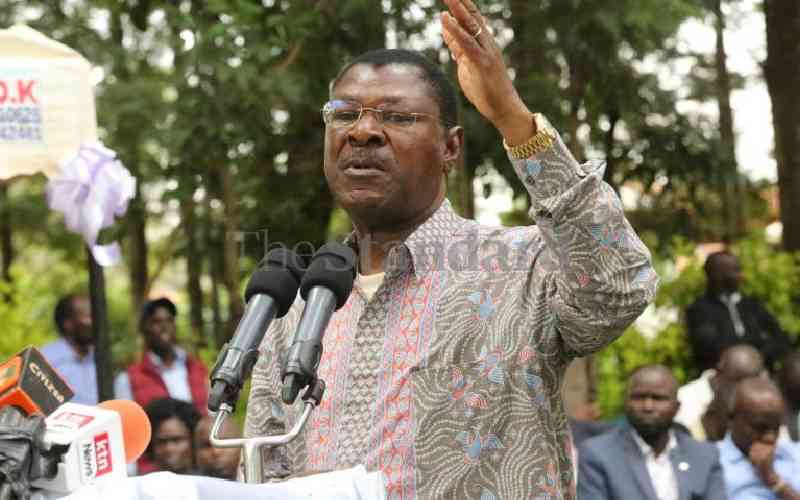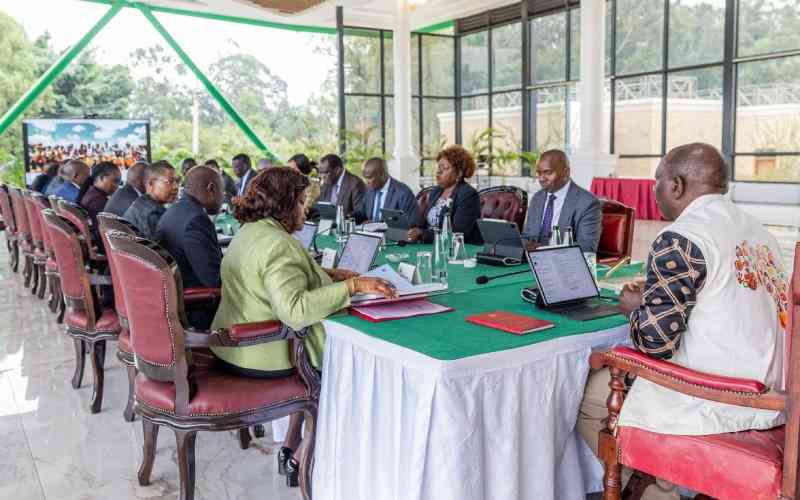
National Assembly Speaker Moses Wetangula has clarified that the House Mace was neither stolen nor destroyed during the breach of Parliament on Tuesday by protestors.
This, after photos of what the public termed the House mace started circulating online on Tuesday, shortly after protestors launched an unprecedented attack on the bicameral House in anti-tax protests.
In one of the photos, a protester was seen fleeing Parliament holding what appeared to be Mace following the wanton destruction orchestrated on the House.
This then invited a myriad of questions on how the National Assembly would convene its sittings henceforth in absence of the mace.
But during a sitting on Wednesday, Speaker Wetangula laid the matter to rest by pointing out that what had been obtained by the protestors was a dummy Mace used for decorative purposes.
"Reports indicating that the House mace had been carted away by the demonstrators are untrue; what was carried away was a dummy Mace on display. I want to assure members of the House that the mace is always highly secured," he communicated.
So what is the Mace exactly?
The ceremonial Mace is a highly ornamented staff of metal, wood or other materials, carried by a Mace-bearer or placed before a sovereign or other high officials in civic ceremonies or before a revered gathering to symbolize authority.
The current mace which bears the Kenyan coat of arms, is a blend of gold, ivory, and gold coating, standing at 4.5 feet in length and weighing 12.5 kilograms. The Mace is also referred to as a Scepter.
Processions that feature Maces include parliamentary or formal academic occasions.
Its significance?
The Mace enhances the richness of parliamentary tradition, and symbolizes the authority of the Legislature in which it is displayed and utilized.
In most Parliaments, no formal business can be transacted in the absence of the Mace. It is regarded, both within and without Parliament, as the overarching symbol of the authority and dignity of the House as well as the Speaker presiding over the House.
In monarchies, it represents Royal authority. The Mace is an essential part of Parliamentary regalia. It gives credence and legality to the assembly of Members of Parliament.
How did Kenya start using the Mace?
In 1958, the Speaker of the Legislative Council, Mr. Cavendish Bentick, received the Mace from the crown Prince. The Parliament of Kenya has used the Mace as part of its legislative undertakings since then. In independent Kenya, two Maces were utilized by the bicameral
House from 1963 to 1966, after which only one was used until 2013 when the new Constitution reinstated the Senate.
 The Standard Group Plc is a multi-media organization with investments in media platforms spanning newspaper print
operations, television, radio broadcasting, digital and online services. The Standard Group is recognized as a
leading multi-media house in Kenya with a key influence in matters of national and international interest.
The Standard Group Plc is a multi-media organization with investments in media platforms spanning newspaper print
operations, television, radio broadcasting, digital and online services. The Standard Group is recognized as a
leading multi-media house in Kenya with a key influence in matters of national and international interest.











